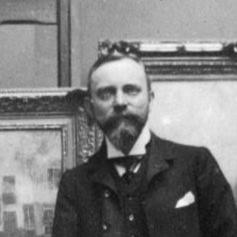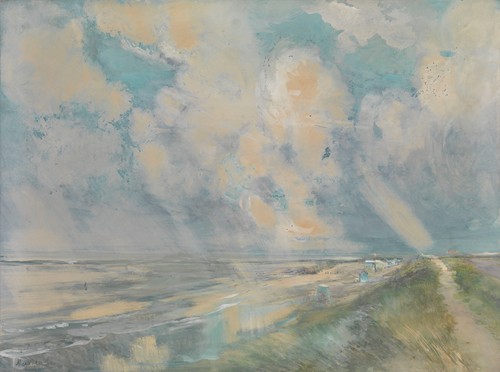

Alexandre Marcette was one of the foremost Belgian marine painters in his time. Tempestuous tides are tossed from canvas to canvas, wavering waters summoned to life to create an oeuvre of evocative and deeply atmospheric works.
Marcette’s artistic journey began with his father, the landscape painter Henri Marcette (1824-1890). He received his first instructions from his father before moving on to study at the foremost institution for arts education in Belgium, the Royal Academy of Fine Arts in Brussels.
Here, Marcette would come under the tutorship of Louis Artan (1837-1890). It seems likely that Artan was a source of great inspiration for Marcette. The older was bubbling with artistic innovation, and his stunningly atmospheric seascapes are full of impressionistic zeal and fascinating studies of light and colour.
Such fervent zeal is also recognisable in Marcette’s oeuvre. Nearly every inch of the Belgian coast was interpreted by him into gloriously dramatic seascapes. The ocean is orchestrated by the temperamental movements of his brush. Sometimes it lies flat, simmering, a silky length of crystalline aquamarine. Other times it is a beast baying and frothing with sea foam, grey and turgid.
Marcette was much praised by art critics for his expressive use of colour and his studies of varying light patterns. Indeed, the sky is just as important in his works, working in union with the sea. There is a Turneresque captivation to the swathing clouds and the watery sun, blanching out across the waters.
Within his homeland, Marcette participated in the modern and progressive art scene which was calling for experimental works like his own. He was a member of L’Essor, an art group that encouraged freedom of spirit in painting. Marcette’s dramatic works certainly seem to fit this mould.

